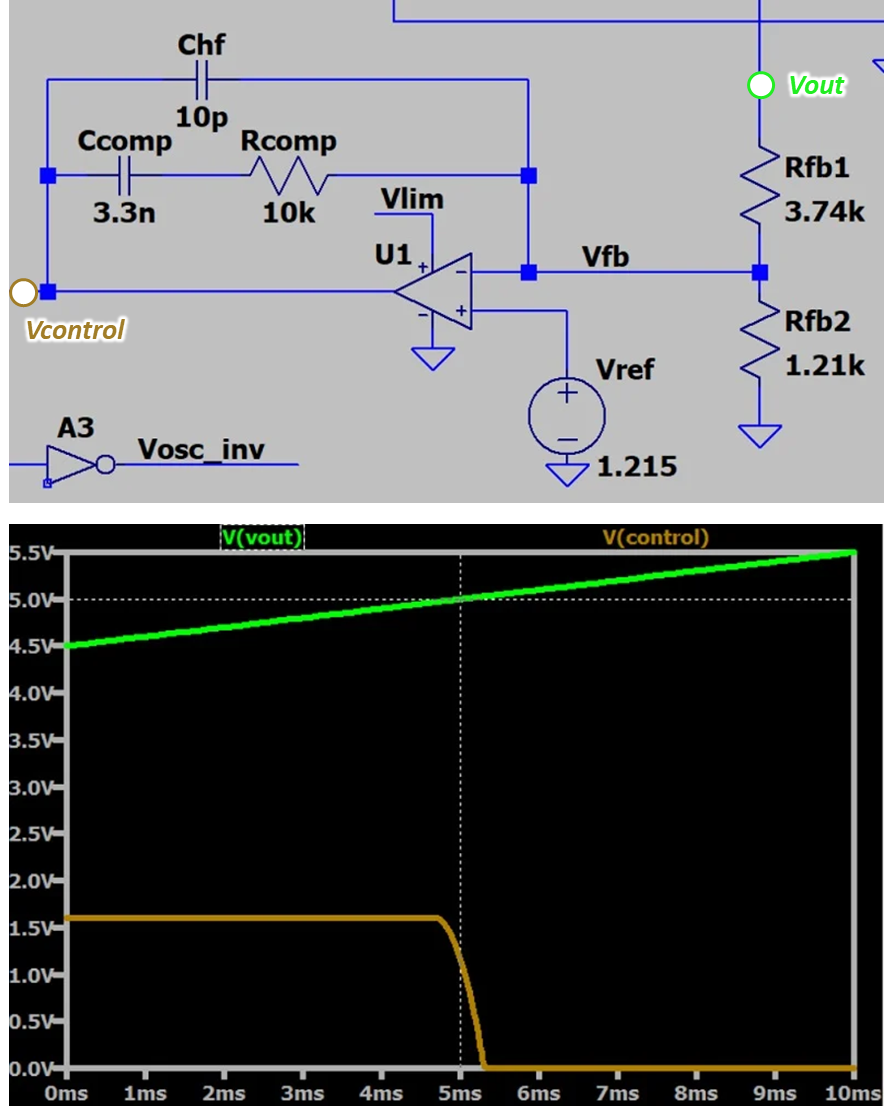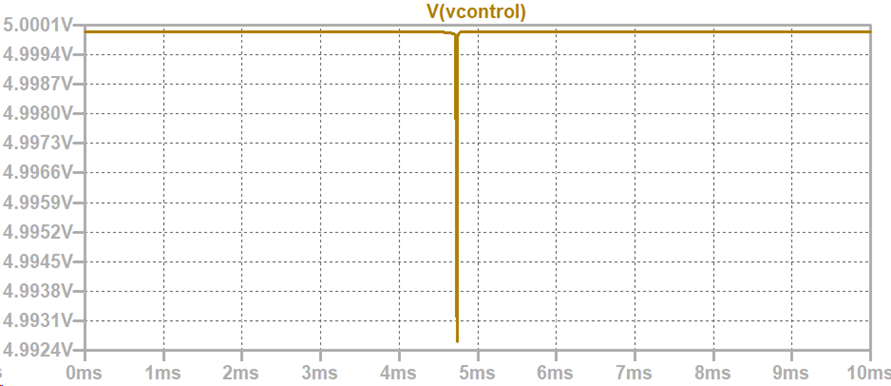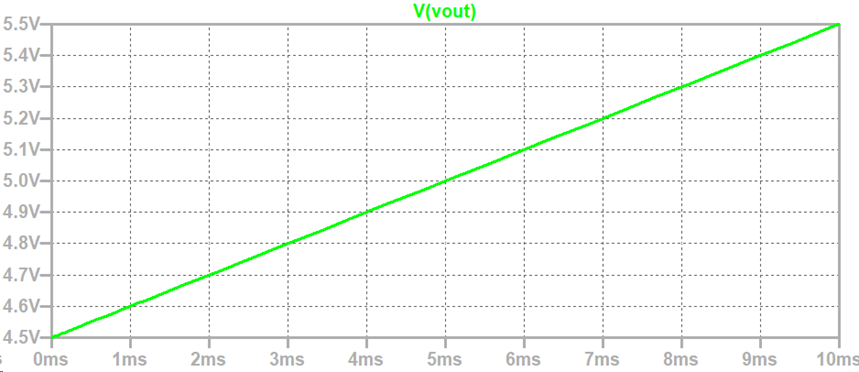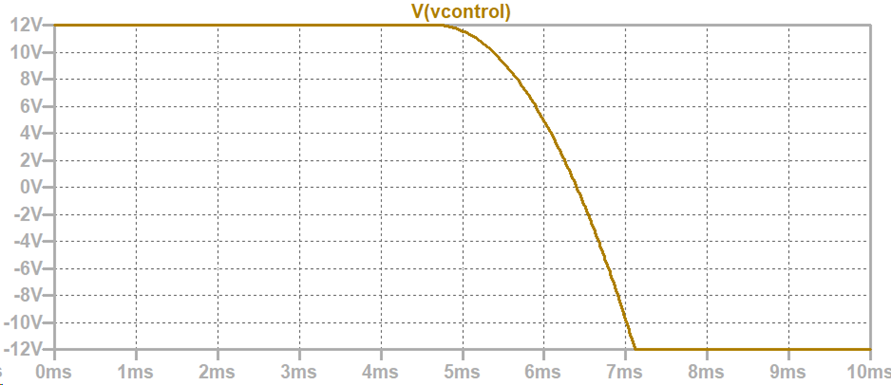I'm simulating the "voltage error amplifier circuit" referenced from this article
In the article, "Vcontrol" will drop to zero when "Vout" is larger than the reference voltage (1.215 [V] here)
But i'm wasn't being able to replicate the result from the above article
The simulation result and circuit from the article are shown below

Mine is shown below (Simulating in LTspice)
The control voltage (Vcontrol) is hundreds of kilovolts, which is quite not reasonable
My questions are
a) How could I modify my circuit to meet the same result as in the article?
b) Is there a design criterion to choose the feedback passive elements?
Thanks!
2024/03/18 UPDATE
After changing the op model to "UniversalOpAmp3" from @Fabio Barone's suggestion, the output "Vcontrol" became more reasonable in amplitude, but the result is still different from the article.

2023/03/19 UPDATE
After correcting the voltage supply polarity from @Fabio Barone's suggestion, the result looks normal now, below is the result for two changes
1.Change the polarity of V3, which is the main reason that this circuit didnt function normally.






